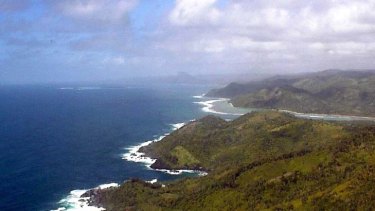Views: 0
PARIS: Madagascar was colonised by a few dozen Indonesian women 1200 years ago, according to scientists who have probed one of the strangest episodes in the human odyssey.
Fonte: Madagascar mystery of how small group of Indonesian women colonised island
PARIS: Madagascar was colonised by a few dozen Indonesian women 1200 years ago, according to scientists who have probed one of the strangest episodes in the human odyssey.
Anthropologists are fascinated by Madagascar, for the island remained aloof from mankind’s conquest of the planet for thousands of years. It then became settled by mainland Africans and Indonesians, whose home was 8000 kilometres away.

A team led by the molecular biologist Murray Cox of New Zealand’s Massey University delved into DNA for clues to explain the migration riddle.
They looked for markers handed down in chromosomes through the maternal line, in DNA samples offered by 266 people from three ethnic Malagasy groups.
Twenty-two per cent of the samples had a local variant of the ”Polynesian motif”, a tiny genetic characteristic that is found among Polynesians, but rarely in western Indonesia. In one Malagasy ethnic group, one in two of the samples had this marker.
If the samples are right, around 30 Indonesian women founded the Malagasy population ”with a much smaller, but just as important, biological contribution from Africa”, it says.
The study focused on mitrochondrial DNA, which is transmitted only through the mother, so it does not exclude the possibility that Indonesian men also arrived with the first women.
Computer simulations suggest the settlement began around AD830, around the time Indonesian trading networks expanded under the Srivijaya Empire of Sumatra.
The investigation points to other contributions from south-east Asia.
Linguistically, Madagascar’s inhabitants speak dialects of a language that traces its origins to Indonesia. Most of the lexicon comes from Ma’anyan, a language spoken along the Barito River valley of south-eastern Borneo, a remote, inland region, with a smattering of words from Javanese, Malay or Sanskrit.
Other evidence of early Indonesian settlement comes in the discovery of outrigger boats, iron tools, musical instruments such as the xylophone and a ”tropical food kit”, the cultivation of rice, bananas, yams and taro brought in from across the ocean.
How the 30 women got across the Indian Ocean to Madagascar is a big question.
One theory is that they came on trading ships, although no evidence has been found that women boarded long-distance merchant vessels in Indonesia.
Another idea is that Madagascar was settled as a formal trading colony, or perhaps as an ad hoc centre for refugees who had lost land and power during the expansion of the Srivijayan Empire.
Yet a third – and more intrepid – hypothesis is that the women were on a boat that made an accidental oceanic voyage. That notion is supported by seafaring simulations using ocean currents and monsoon weather patterns, Cox’s team says.
The study appears in the British journal Proceedings of the Royal Society B.
Agence France-Presse
